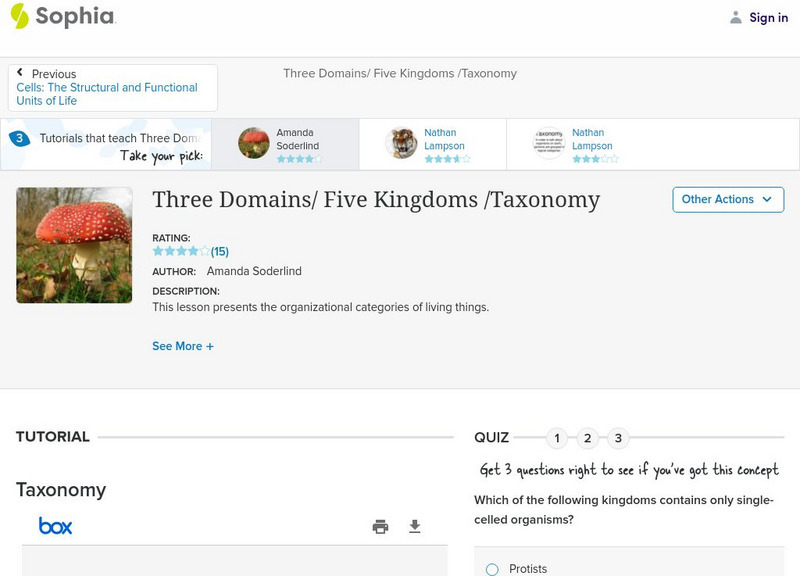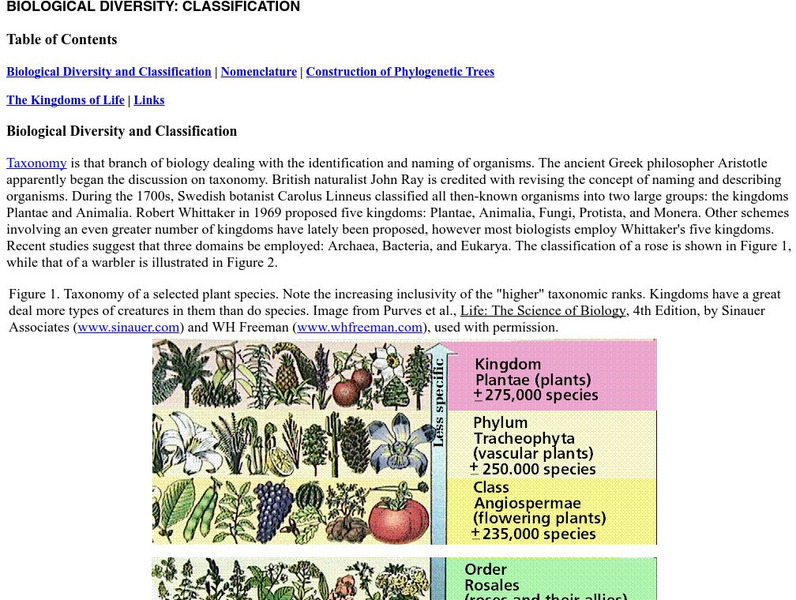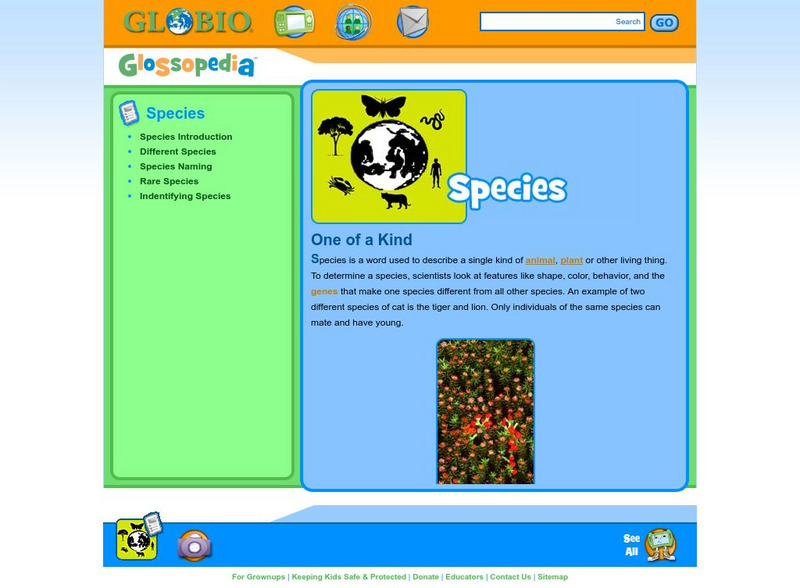Curated OER
Collared Peccary (Javelina)
In this animal facts worksheet, students learn about the only wild, native, pig like animal found in the United States. Students learn facts about the Collard Peccary by reading the worksheet.
Alabama Learning Exchange
Botany Scavenger Hunt Where's the Ginkgo?
Learners use a science journal to log plants that are native to Alabama. In this plant lesson plan, learners identify characteristics, describe environments, and classify the plants that they find.
Curated OER
Fun with Phylogenetic Trees
Tenth graders differentiate angiosperms and gymnosperms. In this biology lesson plan, 10th graders construct a musical phylogenetic tree from information they gathered on resource websites. They present their project in class.
Curated OER
Sharkland Wiki
High schoolers, while researching the waters around southern Africa and viewing a video of the episode "Sharkland" from Thirteen's series NATURE, critique reliability of online resources and analyze the various components of a wiki. They...
Curated OER
Adventuring in the Archipelago
Students study Charles Darwin's voyage on the HMS Beagle and his visit to the Gal??pagos Islands. They click through an interactive map of the Gal??pagos Islands to read actual and fictional journal entries from a fellow eco-tourist.
Vision Learning
Visionlearning: Biology: Taxonomy Ii: Ruling Names of Giants
Instructional module focusing on binomial nomenclature. Discussion includes Carolus Linnaeus' taxonomic classification system for naming all species. Site also includes an interactive practice quiz and links relating to the topic.
Vision Learning
Visionlearning: Biology: Taxonomy I: What's in a Name
Instructional module focusing on biological classification. Discussion includes Carolus Linnaeus' taxonomic classification system for organizing and classifying living things. Site also includes an interactive practice quiz and links...
Sophia Learning
Sophia: Three Domains/ Five Kingdoms /Taxonomy: Lesson 1
This lesson presents the organizational categories of living things. It is 1 of 3 in the series titled "Three Domains/ Five Kingdoms /Taxonomy."
City University of New York
Classification: Bringing Order Out of Chaos
A self-directed module on all aspects of biological classifications that covers the species problem, diversity and chaos, cladistics, putting things in groups, and so on.
Estrella Mountain Community College
Estrella Mountain College: Classification
Discusses many aspects of information pertainingto organism classification. Provides links to other areas in biology as well.
Smithsonian Institution
Smithsonian National Zoo: Classification Systems
A great overview of the science of classification. Topics addressed include summaries of the five kingdoms, the seven taxa, the definition of a species and the classification of the panda.
National Pest Managment Association
Pest World for Kids: Pest Taxonomy
During the first session of this two-session lesson, students use the different species represented in the PestWorldforKids.org's "Pest Guide" section to learn how living things are grouped together according to the characteristics they...
Ohio State University
Ohio State University: Plant Classification
Review of binomial nomenclature and levels of classification in the plant kingdom. A quiz is available for students along with pictures, charts, and links.
Globio
Glossopedia: Species
A species is defined as a single kind of animal, plant or creature. Examples of different species are given and how the many species that exist relate to biodiversity. Scientific naming conventions are introduced.
Open Curriculum
Open Curriculum: Classification: Form and Function
Find out about taxonomy, and understand why scientists classify organisms. Study the concepts behind Linnaean taxonomy and binomial nomenclature.
Other
Southwest Tennessee Community College: Classification of Organisms
College-level instructor's notes describing taxonomy. Explanations and images give a chronological history of the science of classifying organisms.
Ducksters
Ducksters: Biology for Kids: Scientific Classification
Kid's learn about Biological and Scientific Classification. Kingdoms, phylums, genus, species, and more.
Biology 4 kids
Biology4 Kids: Rules of Taxonomy
A short informational piece which provides a clear description of the scientific identification system for all species.
Sophia Learning
Sophia: Classification of Organisms: Lesson 1
This lesson will introduce taxonomy and give an example by providing the scientific classification of an organism. It is 1 of 2 in the series titled "Classification of Organisms."
Sophia Learning
Sophia: Three Domains/ Five Kingdoms /Taxonomy: Lesson 3
This lesson presents the organizational categories of living things. It is 3 of 3 in the series titled "Three Domains/ Five Kingdoms /Taxonomy."
Sophia Learning
Sophia: Three Domains/ Five Kingdoms /Taxonomy: Lesson 2
This lesson presents the organizational categories of living things. It is 2 of 3 in the series titled "Three Domains/ Five Kingdoms /Taxonomy."
Other
Illinois Wesleyan University: Tardigrade Species Distribution Project
This was a research project on tardigrades that took place some time ago. The site contains information about the project and about tardigrades, including their taxonomy and a glossary. As this is an older site, the links to the...
Science Education Resource Center at Carleton College
Serc: Investigating Biological Classification: Organization of All Living Things
All living things can be identified by their placement in a biological classification table. Students will investigate the organization of all living things and learn how to classify through the process of classifying their own shoes....
Other
Illinois Wesleyan Univ.: Tardigrade Species Distribution Project: Lesson Plan
This lesson plan was for classes that participated in a research project on tardigrades that took place in 1999. Tardigrades, also known as water bears, are fascinating, tiny creatures that can survive under the most extreme conditions....






















